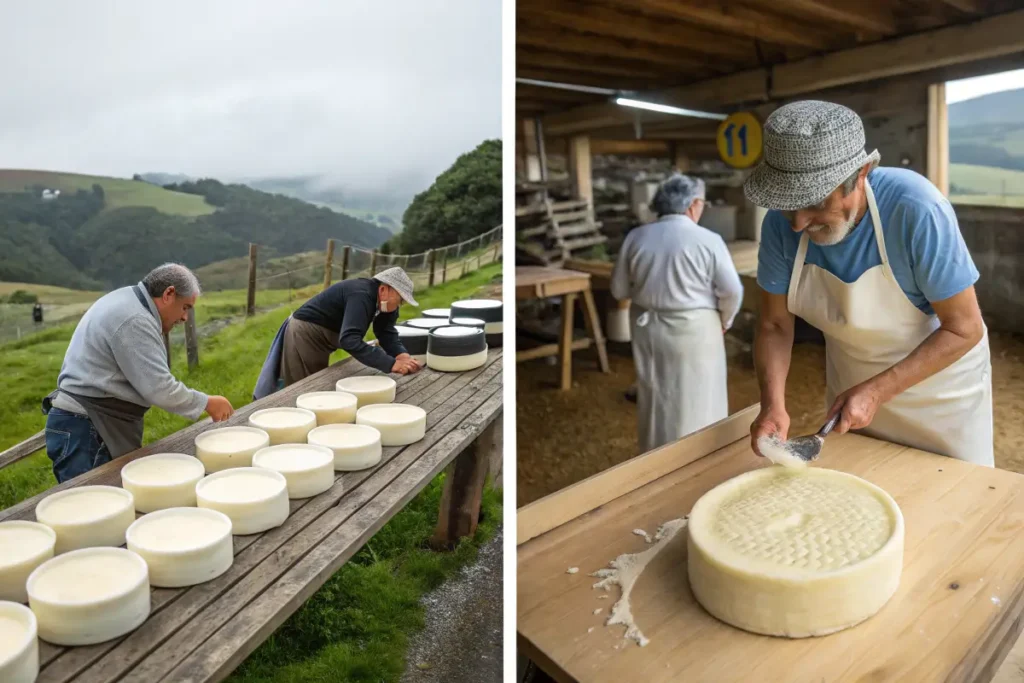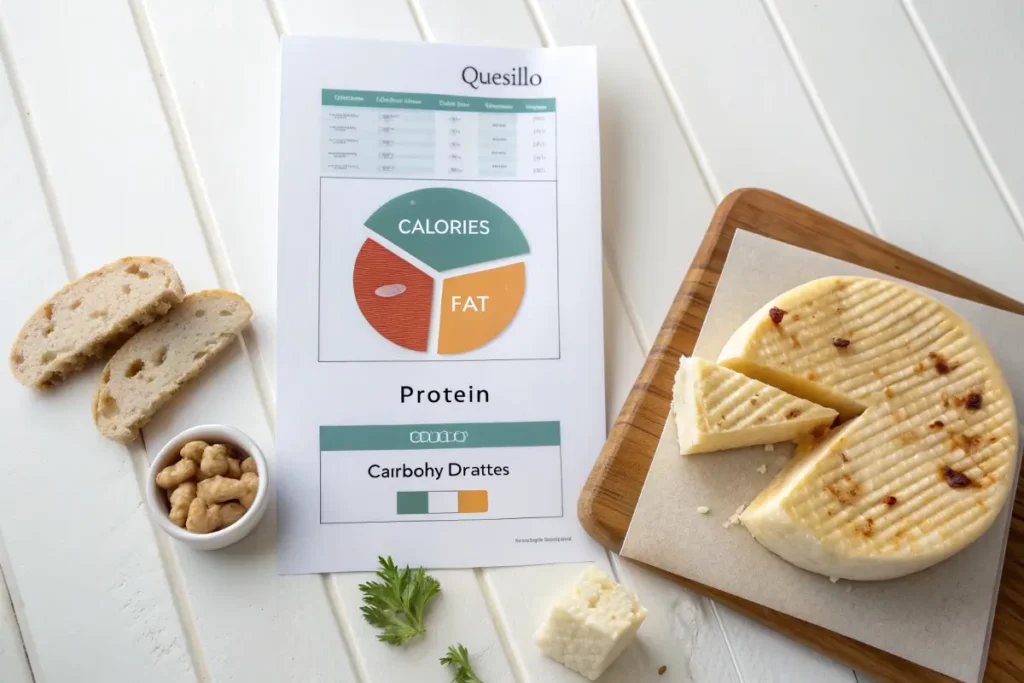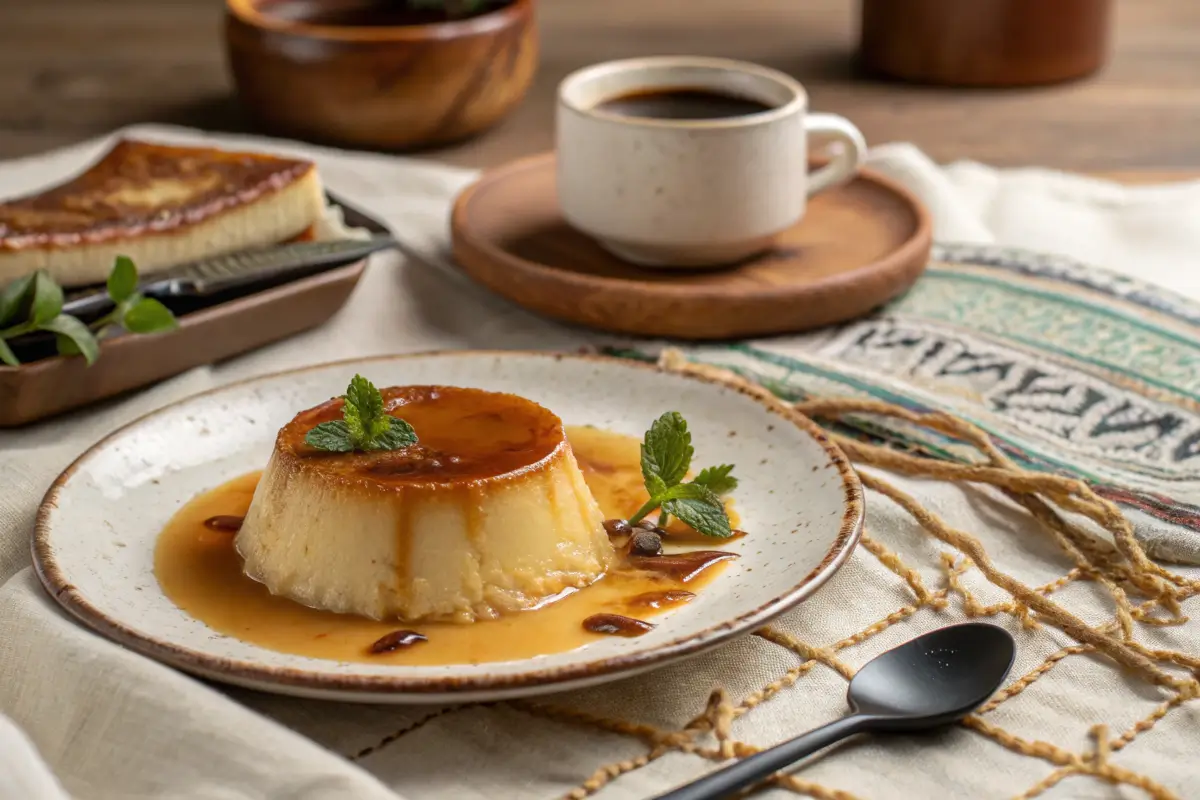Introduction to Quesillo
If you’ve ever heard the word “quesillo” and wondered what it means, you’re not alone. This term carries different meanings depending on where you are and who you’re talking to. But at its heart, quesillo represents a fascinating slice of Latin American culture. So, what is the meaning of quesillo? Well, it’s more than just cheese. It’s a culinary treasure, a cultural icon, and a word that has traveled across regions, picking up diverse interpretations along the way.
Whether you’re diving into Latin American cuisine or brushing up on your language skills, understanding quesillo is like opening a door to rich traditions and mouthwatering dishes. From a type of stretchy, delicious cheese in Mexico to a creamy dessert in Venezuela, quesillo’s versatility is part of what makes it so intriguing. In this part, we’ll break down the origins, meanings, and variations of quesillo to give you a full picture. So, grab a snack preferably cheese and let’s get into it!
To dive deeper into what is the meaning of quesillo, you can explore its origins and culinary variations in this detailed guide to quesillo.
Etymology and Meaning of the Term “Quesillo”
Linguistic Origins of Quesillo
To answer the question “What is the meaning of quesillo?” we need to start with its linguistic roots. The word quesillo comes from Spanish, where “queso” means cheese. The suffix “-illo” is a diminutive, often used to indicate something smaller or cuter. Essentially, quesillo translates to “little cheese,” which is an adorable and fitting name for the term.
This simple yet descriptive word hints at its original purpose: a small, pliable cheese that was easy to make and share. But language is never static, and neither is food. Over time, the word quesillo took on unique connotations in different parts of the world, particularly in Latin America.
Variations in Meaning Across Different Regions
So, what is the meaning of quesillo when you travel from one country to another? In Mexico, quesillo refers to a specific type of cheese that’s often compared to mozzarella. It’s soft, stringy, and perfect for melting, making it a favorite in dishes like quesadillas and tlayudas.
Meanwhile, in Venezuela, quesillo takes on a sweet twist. There, it’s a popular dessert similar to flan, made with condensed milk, sugar, and eggs. If you’re in Nicaragua, quesillo might bring to mind a street food classic: a tortilla stuffed with cheese, pickled onions, and sour cream. The word adapts to the flavors and traditions of each region, showcasing its incredible cultural range.
These variations highlight how quesillo isn’t just a food term but a reflection of local tastes and traditions. When asking “What is the meaning of quesillo?” you’re also diving into the stories and flavors that define Latin American cuisine.
For more about cheese varieties, check out our article on whether queso cheese is good for melting.
Culinary Context: What Is Quesillo in Food?
To truly understand quesillo, you have to consider its culinary context. Across Latin America, quesillo plays a starring role in both savory and sweet dishes. Its flexibility as an ingredient is part of why it’s so beloved. Whether you’re in the mood for cheesy goodness or something creamy and sweet, quesillo has you covered.
By now, you’re probably starting to see why so many people are curious about this term. What is the meaning of quesillo? It’s not just a word it’s a key to unlocking delicious culinary traditions and exploring how food can tell stories.
Regional Variations of Quesillo
When asking, “What is the meaning of quesillo?” it’s important to consider the regional differences that give this term its charm. Depending on where you are in Latin America, quesillo might be a cheese, a dessert, or even a combination of both. The unique ways it is used highlight how food connects us to our roots and traditions.
Quesillo in Mexico: More Than a Cheese
In Mexico, quesillo is not just cheese; it’s a culinary staple. Also known as Oaxaca cheese, it’s a soft, stringy cheese that melts beautifully. People love to use it in dishes like quesadillas, tlayudas, and enchiladas. If you’ve ever bitten into a hot, gooey quesadilla, you’ve likely enjoyed the magic of quesillo.
But what is the meaning of quesillo beyond its taste? For many Mexicans, it’s a connection to their culinary heritage. This cheese is hand-pulled, a traditional technique that reflects the skill and patience of local cheesemakers. Each strand of quesillo tells a story of time-honored practices passed down through generations.
Venezuelan Quesillo: A Decadent Dessert

Travel to Venezuela, and you’ll discover an entirely different answer to “What is the meaning of quesillo?” Here, quesillo is a beloved dessert that resembles flan but has its own unique twist. It’s made with a creamy blend of condensed milk, eggs, sugar, and caramelized syrup, creating a dessert that’s rich and satisfying.
Venezuelan quesillo is often served during celebrations like birthdays, holidays, or family gatherings. It’s a dish that brings people together, and its sweetness mirrors the warmth of Venezuelan culture. While it shares its name with cheese, this version of quesillo is all about indulgence and joy.
Other Latin American Interpretations
The question “What is the meaning of quesillo?” gets even more interesting when you look at other Latin American countries. In Nicaragua, quesillo takes on a street-food identity. Imagine a freshly made tortilla filled with soft cheese, pickled onions, and a dollop of sour cream—it’s simple, delicious, and utterly satisfying.
Meanwhile, in countries like Colombia and El Salvador, quesillo can refer to different types of cheeses or snacks, depending on the local culinary traditions. These regional differences remind us of how a single word can carry countless flavors and stories. Each variation of quesillo reflects the creativity and resourcefulness of Latin American food culture.
The Production Process of Quesillo
Understanding how quesillo is made helps us appreciate why it holds such an important place in Latin America. Whether it’s the cheese or dessert version, the process requires care and attention to detail. When you ask, “What is the meaning of quesillo?” you’re also asking about the dedication that goes into making it.
Traditional Methods of Quesillo Preparation
The traditional production of quesillo cheese involves hand-pulling, a technique that creates its signature stringy texture. Milk is curdled, heated, and stretched until it forms long strands. This hands-on method is often carried out by small-scale cheesemakers, preserving the artisanal quality of quesillo.
On the dessert side, making Venezuelan quesillo involves creating a smooth custard base and carefully caramelizing sugar to line the mold. It’s a labor of love that results in a dessert that’s as beautiful as it is delicious.
Ingredients Used in Making Quesillo
The ingredients for quesillo are straightforward but vary depending on the type. For cheese, you’ll need fresh milk, rennet, and salt. For dessert quesillo, condensed milk, eggs, sugar, and a hint of vanilla are the key components. These simple ingredients come together to create something extraordinary, showing that great food doesn’t have to be complicated.
Tools and Techniques for Authentic Taste
Whether it’s a hand-pulled cheese or a baked custard, the tools and techniques used in making quesillo are essential. Cheesemakers use wooden paddles and water baths, while dessert makers rely on molds and ovens to perfect their recipes. What is the meaning of quesillo? It’s the art of using simple tools to create flavors that resonate across generations.
Industrial Production of Quesillo
While traditional methods are cherished, industrial production has made quesillo more accessible to larger audiences. Factory-made quesillo, especially in the form of Oaxaca cheese, is now available in grocery stores worldwide. However, many would argue that nothing beats the taste of authentic, hand-prepared quesillo.
Asking, “What is the meaning of quesillo?” in today’s world means recognizing its dual identity as both an artisanal treasure and a globally distributed product. Whether you’re enjoying it fresh from a local market or packaged from a store, quesillo has a way of leaving a lasting impression.
Quesillo in Modern Gastronomy
As Latin American cuisine gains popularity worldwide, quesillo is finding new ways to shine. From fine dining to creative fusion dishes, chefs are exploring its potential in modern gastronomy. What is the meaning of quesillo in this context? It’s proof that traditional foods can inspire innovation while staying true to their roots.
Nutritional Profile of Quesillo

Health Benefits of Consuming Quesillo
When we ask, “What is the meaning of quesillo?” we aren’t just talking about its cultural or linguistic significance—we’re also talking about its nutritional value. Quesillo, especially the cheese variety popular in Mexico, is a great source of calcium and protein. These nutrients are vital for strong bones and muscle development. It’s also lower in fat compared to some aged cheeses, making it a lighter option for those who love dairy but want to keep things balanced.
Additionally, the Venezuelan version of quesillo, while a dessert, contains eggs, which provide a good dose of protein. Of course, this version is also rich in sugar, so moderation is key. Both types of quesillo can be enjoyed as part of a healthy diet when paired with fresh ingredients like fruits, vegetables, or whole grains.
Considerations for Lactose Intolerant Consumers
One thing to consider is whether quesillo works for lactose-intolerant individuals. In the case of Mexican quesillo, some people who are mildly lactose intolerant might still enjoy it because it has lower lactose levels than milk. However, those with severe lactose intolerance should proceed with caution or seek lactose-free alternatives. As for Venezuelan quesillo, its high dairy content might be a challenge for those sensitive to lactose.
If you’re wondering “What is the meaning of quesillo?” from a dietary perspective, it’s essentially a versatile food that can fit various lifestyles, but it’s always good to know your limits when it comes to dairy.
The Symbolic and Cultural Importance of Quesillo
Quesillo in Festivals and Celebrations
Across Latin America, quesillo often takes center stage in celebrations and festivals. In Mexico, quesillo cheese is a key ingredient in traditional recipes served during holidays like Dia de los Muertos or family gatherings. In Venezuela, the sweet quesillo flan is a must-have at birthdays, weddings, and Christmas dinners.
What is the meaning of quesillo in these contexts? It’s not just food—it’s a symbol of togetherness and cultural pride. Sharing a dish with quesillo often feels like sharing a piece of home. This emotional connection to food is one of the reasons why quesillo holds such a cherished place in Latin American hearts.
How Quesillo Reflects Latin American Heritage
The history and variations of quesillo highlight the diversity of Latin America. The Mexican version speaks to the country’s love of fresh, simple ingredients, while the Venezuelan version shows the influence of Spanish colonization and the use of sugar-rich desserts. In each case, quesillo represents adaptation and creativity.
Asking “What is the meaning of quesillo?” from a cultural perspective reveals how a single word can carry layers of history and identity. It’s a reminder of the rich culinary traditions that unite families and communities across generations.
FAQs About Quesillo
What is quesillo in English?
In English, quesillo translates to “little cheese,” which perfectly captures its original meaning. However, the term has evolved to include variations like flan in Venezuela and street food in Nicaragua.
Is quesillo the same as mozzarella?
Not exactly. While Mexican quesillo is often compared to mozzarella because of its stringy texture and mild flavor, the two are different. Quesillo is made using traditional Latin American techniques and has its unique taste and texture.
What is the history of quesillo?
The history of quesillo traces back to the blending of indigenous and European culinary traditions in Latin America. Its origins vary by region, with Mexican quesillo stemming from Oaxaca and Venezuelan quesillo influenced by Spanish desserts like flan.
How do you say quesillo?
The word quesillo is pronounced “keh-SEE-yoh.” It’s a fun word to say and even more fun to eat—whether you’re talking about the cheese or the dessert!
Conclusion: The Legacy and Love for Quesillo
What is the meaning of quesillo? It’s more than just a word—it’s a concept that ties together food, culture, and community. From its role in Latin American celebrations to its adaptability in modern gastronomy, quesillo continues to inspire curiosity and love. Whether you’re savoring its creamy texture in a traditional dish or exploring new ways to enjoy it, quesillo proves that sometimes, the simplest foods carry the deepest meanings.


3 thoughts on “What Is the Meaning of Quesillo? 5 Surprising Facts About Its Origins and Cultural Significance”